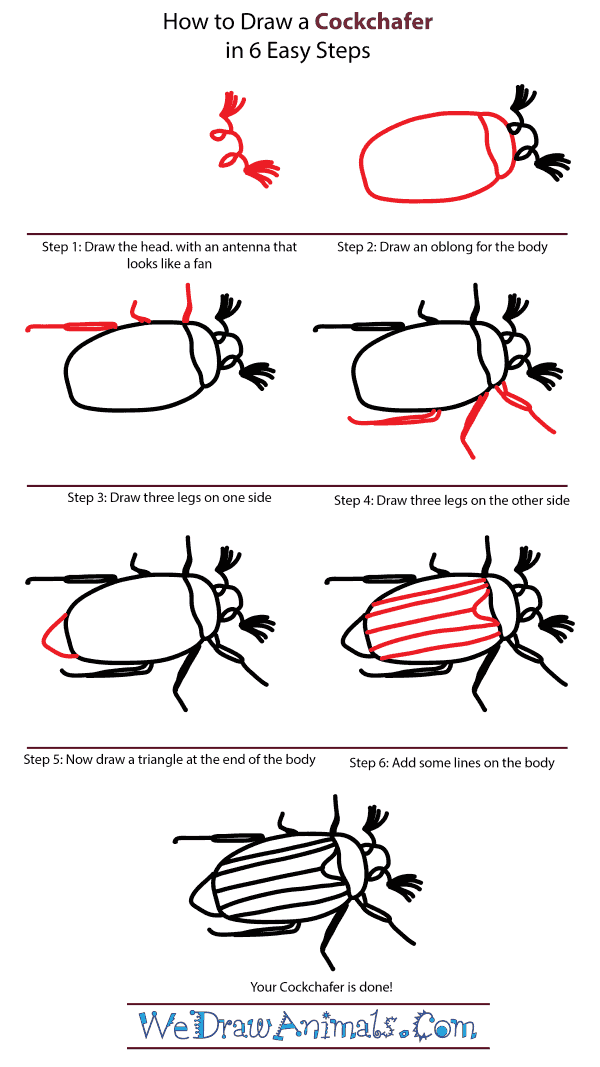In this quick tutorial you'll learn how to draw a Cockchafer in 6 easy steps - great for kids and novice artists.
The images above represent how your finished drawing is going to look and the steps involved.
Below are the individual steps - you can click on each one for a High Resolution printable PDF version.
At the bottom you can read some interesting facts about the Cockchafer.
Make sure you also check out any of the hundreds of drawing tutorials grouped by category.
How to Draw a Cockchafer - Step-by-Step Tutorial
Step 1: Draw the head, with two antennae on either side that look like fans
Step 2: Draw an oval for the body. Add a line to right side to define the head
Step 3: Draw three lines at the top of the body for legs
Step 4: Repeat the three lines on the bottom for the legs
Step 5: Draw a triangle at the left end of the body
Step 6: Add lines in the middle of the body (left to right)
Interesting Facts about the Cockchafer
The cockchafer is a small flying insect that is also known as the doodlebug or the Maybug. In the mid-twentieth century, the population of this pest was eradicated almost entirely from Europe due to the use of pesticides. However, since the nineteen eighties, the population has been on a steady increase. This is attributed to government-imposed regulations regarding pest control. They are brown in color and reach up to thirty millimeters in length with a slender body and leaf-like appendages on their antennae. Males have seven “leaves” on their antennae, while females only have six. Adults appear in April or May, and live for six to seven weeks. After two weeks, the females of this species will begin laying their eggs, burying them as far as twenty centimeters into the soil. She will do this repeatedly until sixty to eighty eggs are buried. Eggs will be typically laid in fields, where the adult has access to their favored oak leaves and conifer needles. White grubs, the name for the larvae of this species, will hatch after four two six weeks. They will spend the winter beneath the surface of the ground, feeding on potato roots and only coming up to the surface in springtime.
Did you know?
- Grubs of this species will develop inside the soil for four to five years.
- Because these creatures have large appetites, they are considered huge pests to the forestry and agricultural industries.
- In the nineteenth century, cockchafers were even served as food.
- It took the invention of modern pesticides to greatly curb and control the cockchafer population.
- In earlier years, children used to make games out of the cockchafer, putting pins its wings or tying cloth to its legs to watch it fly in spiraling circles.
Additional Information about the Cockchafer Because of a developed resistance to manmade pesticides, humans have to use more natural forms of pest control, such as certain types of fungi, to manage the large population of these insects. Also because of the growing concerns about pesticides being sprayed onto food that will be eaten by humans, most forms of such pesticides are banned from use in the European Union.







